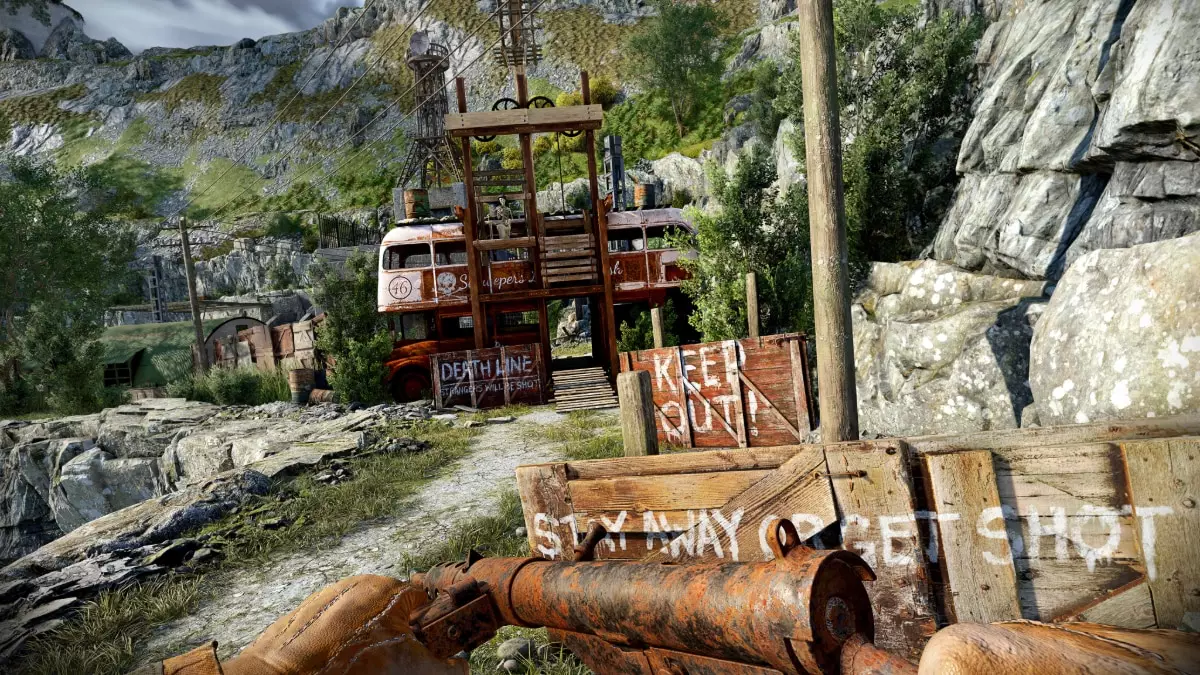The release of Atomfall marks a seminal moment for indie studios in an era where hundreds of games vie for attention in an oversaturated market. Developed by Rebellion Developments and released just last month on multiple platforms—including PC, PlayStation, and Xbox—this action-survival game has already reached a staggering two million players. CEO Jason Kingsley has hailed the launch as a “huge success,” notably attributing this triumph to the strategic decision to debut on Xbox Game Pass. This partnership has not just been a boon for Rebellion but seems to herald a new methodology for emerging game developers seeking visibility in a competitive landscape dominated by blockbuster titles.
What makes Atomfall’s success particularly interesting is its unique premise. Touted for its engaging gameplay and compelling narrative—set amidst a post-apocalyptic northern England loosely inspired by historical events—the game has garnered various comparisons to the Fallout series. These comparisons may have enhanced interest, but it is clear that the marketing prowess of Xbox Game Pass was the catalyst that propelled the game into the limelight. Rebellion’s ingenious choice to launch on a subscription model has not only democratized access for gamers but has also radically shifted conventional metrics of success.
The Power of Xbox Game Pass
Understanding the mechanics of Xbox Game Pass reveals why its inclusion was pivotal. This service encourages players to venture outside their comfort zones and explore titles they may otherwise have overlooked. Kingsley noted that the game’s discoverability was a significant hurdle, but the Game Pass model essentially mitigated this by putting Atomfall directly in the hands of players eager to try something new. This not only garners immediate attention but also breeds organic word-of-mouth advertising—players sharing their excitement on social media, drawing in even those who may not be subscribed to the service.
This phenomenon presents a fascinating paradox. While Game Pass may traditionally be viewed as potentially detrimental to unit sales due to its subscription-based nature, Rebellion’s experience challenges that narrative. Kingsley stated that the financial returns from launching on Game Pass have been “disproportionate.” The upfront monetary compensation from Microsoft allowed Rebellion to navigate the uncertain waters typical of game launches, ensuring profitability despite the apparent risk.
A New Paradigm for Indie Developers
Rebellion’s success challenges long-held beliefs within the gaming community about distribution models and profitability in the indie sector. Historically, indie games relied heavily on self-promotion and press coverage, often struggling to stand out amidst waves of big-budget titles. Atomfall’s early player count of over two million, buoyed by its Game Pass launch, reveals an urgent need for indie developers to engage with innovative distribution mechanisms. It is a clarion call that the intersection of creative talent and strategic partnership can yield exceptional results.
Moreover, this case study emphasizes the need for a shift in mindset away from solely focusing on immediate sales figures. The extended lifecycle of a game—as indicated by its community growth and sustained interest—can be just as invaluable, if not more so, than traditional metrics. Rebellion’s contemplation of an Atomfall sequel speaks volumes about the potential longevity of the franchise. It underscores the notion that a game’s success can inject sufficient confidence into studios like Rebellion to invest further in their properties, thereby enriching the gaming landscape with original content.
What Lies Ahead
With Atomfall’s success firmly established, Rebellion is now contemplating the potential evolution of the franchise. It is an exciting time to be part of the gaming discourse, particularly for fans keen on seeing what new narratives and innovations the studio will implement in future titles. As players immerse themselves in the world of Atomfall, they unknowingly become part of a broader narrative, one that indicates a promising future for indie studios that can align creative storytelling with innovative distribution channels.
Ultimately, Atomfall is not merely a fleeting success; it signifies a transformative moment for indie games in a volatile industry. The interplay between game design and effective marketing strategies, as showcased by Rebellion and Microsoft, is a lesson that could inspire a generation of developers to forge their own paths toward success in an increasingly competitive digital marketplace.

